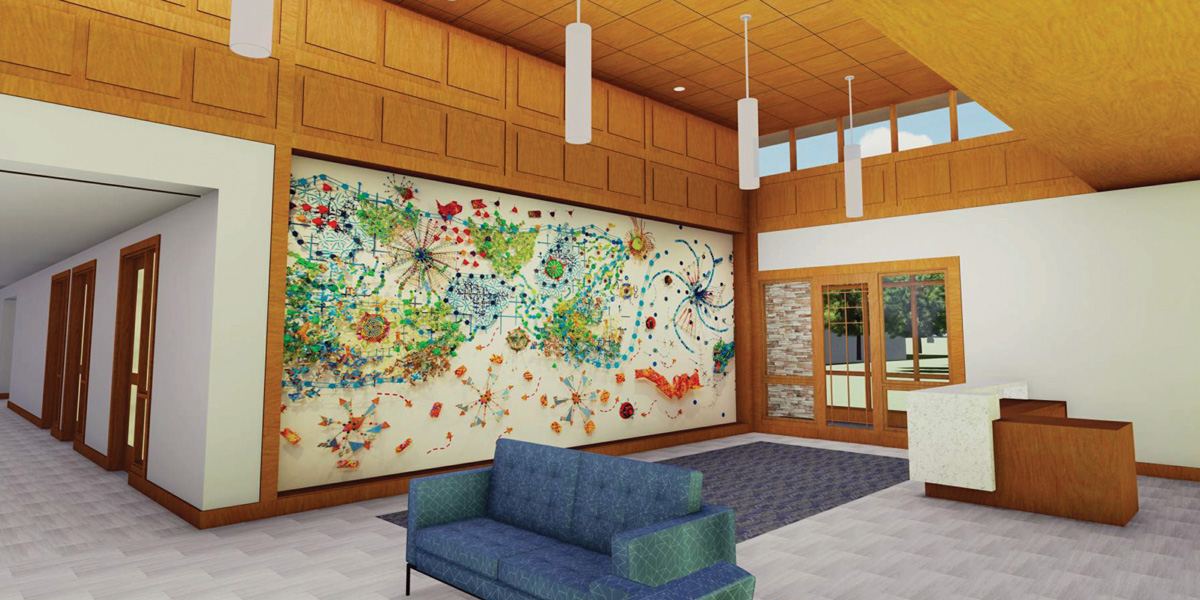Reading the Weather

Artist Nathalie Miebach is fascinated by weather.
She has spent her career exploring the intersection of art and science, taking scientific meteorological data and weaving it into art. In lieu of charts and graphs, she translates temperature, wind, and pressure gradients into dynamic, colorful sculptures.
After collecting scientific weather data, Miebach plots each data point and element with a combination of colorful paper, string, dowels, reeds, and beads. Using a basket weave as her main grid, she assigns meaning to her materials. One reed may represent an hour in time or a longitudinal degree.
It’s important to Miebach that the objects accurately reflect weather data, because she wants her finished pieces to live in the science world as much as in the world of sculpture. Her fanciful, intricate, and brightly colored woven sculptures serve as vessels for her data.
Visitors will get a chance to see Miebach’s artwork close up at the Kimberly and James Hill Center for Student Success, slated to open in late summer. Miebach’s “Changing Waters” will be permanently installed in the lobby of the new building. The 24-foot-long art installation depicts the weather patterns and marine ecosystems within the Gulf of Maine. Aurora University first displayed “Changing Waters” in a 2017 exhibit at the Schingoethe Center.
“Weather is this invisible complexity that we walk through every day,” Miebach told CNN in a short documentary about her work. “What artists can do is help us look at data differently and find alternative ways of thinking about it. I think it’s so important in helping us understand data better.”